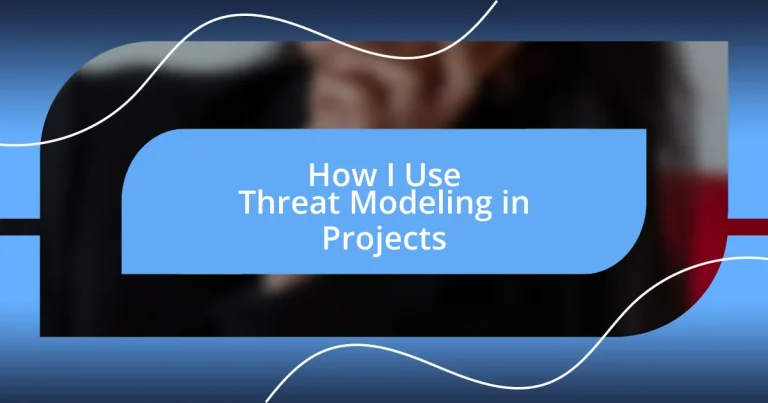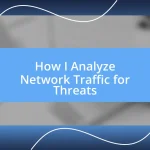Key takeaways:
- Understanding assets in a project extends beyond data and technology to include people and processes, highlighting the importance of a holistic view in threat modeling.
- Effective threat identification involves scenario mapping, impact assessment, and learning from historical data to prioritize responses and enhance security strategies.
- Mitigation strategies should be user-centric and involve collaboration among team members, with a focus on continuous monitoring and adaptation to evolving threats.
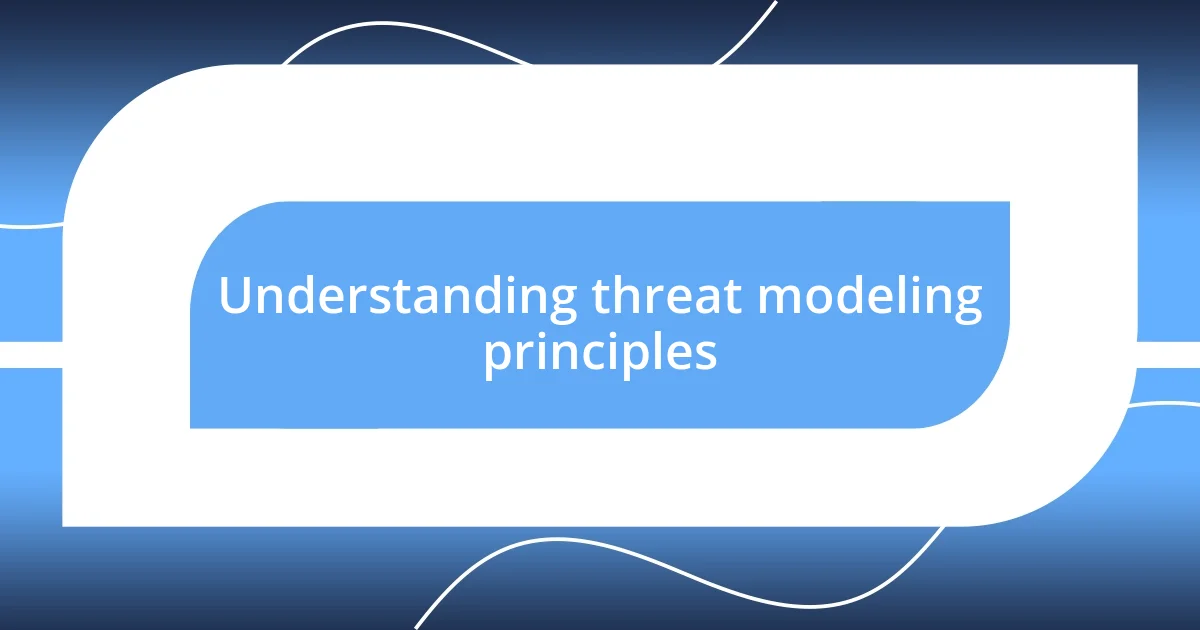
Understanding threat modeling principles
When I first dove into threat modeling, the key principles felt overwhelming, but then I began to see them in a new light. It’s like piecing together a puzzle; each component—assets, vulnerabilities, and threats—needs to be clearly defined for the picture to emerge. Have you ever tried to identify what really matters in your project? I find that focusing on the assets helps clarify the potential threats and prioritizes my approach.
One principle I constantly revisit is the idea of understanding the assets involved. For me, assets aren’t just the code or data; they include the people and processes that breathe life into the project. I remember a time when my team overlooked a critical function in a project, only to realize later that the very heart of our workflow was at risk. It was a wake-up call that made me appreciate the holistic view that threat modeling offers.
Moreover, engaging with stakeholders during the threat modeling process has been invaluable. I often ask, “What keeps you up at night?” Their responses bring insights I might not have considered, revealing vulnerabilities that could easily be overlooked. This collaborative perspective not only helps in identifying threats but also fosters a culture of security awareness within the team, as we all share the responsibility for safeguarding our projects.
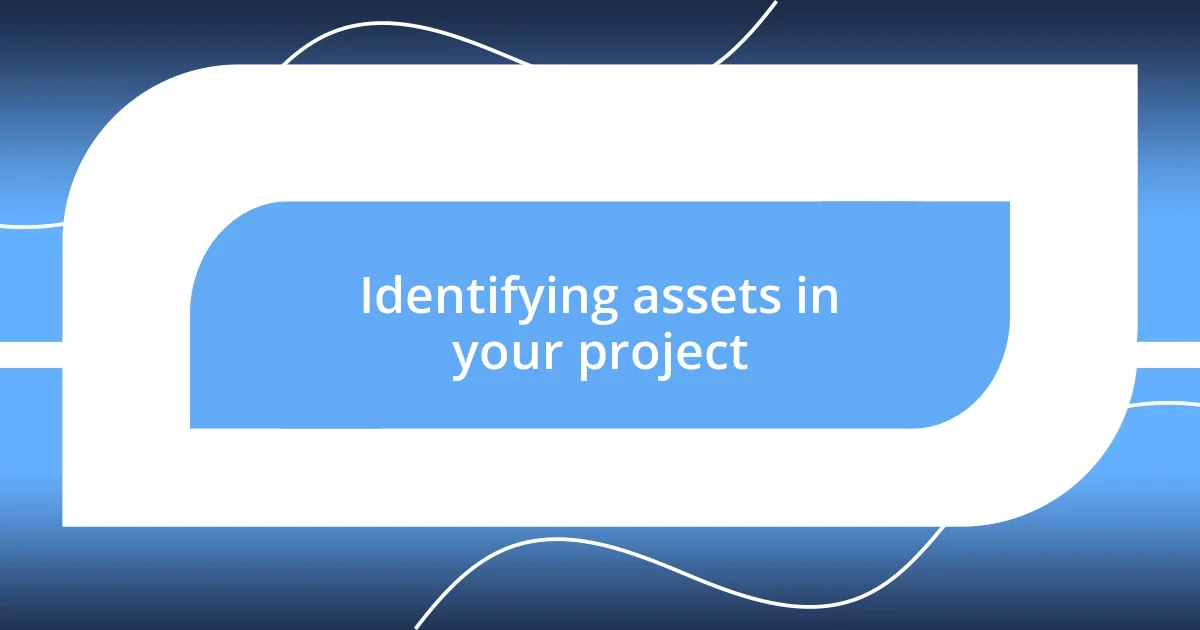
Identifying assets in your project
Identifying assets in a project is crucial, and I’ve learned it’s not just about compiling a list. When I set out to define assets, I dig deeper than surface-level elements like servers or software. It’s about recognizing the value they bring and their role in the bigger picture. For example, in one project, I realized that our most significant asset was actually the client trust we had built over the years. Losing that trust would have been far more damaging than any data breach.
To effectively identify assets, I often consider the following points:
- Data: What information are we handling? Customer data, intellectual property, and proprietary algorithms must be prioritized.
- People: Who are the critical team members? Their skills and knowledge are pivotal assets that we need to protect.
- Processes: Are there workflows that are essential for project success? Identifying these helps in safeguarding them from disruptions.
- Technology: What tools and platforms are we using? Each serves a purpose and has its vulnerabilities.
- Reputation: What’s our standing in the industry? Protecting our brand is as vital as protecting our data.
By taking this comprehensive approach, I find that I not only identify what I need to safeguard but also align my security posture with the project’s overall objectives.
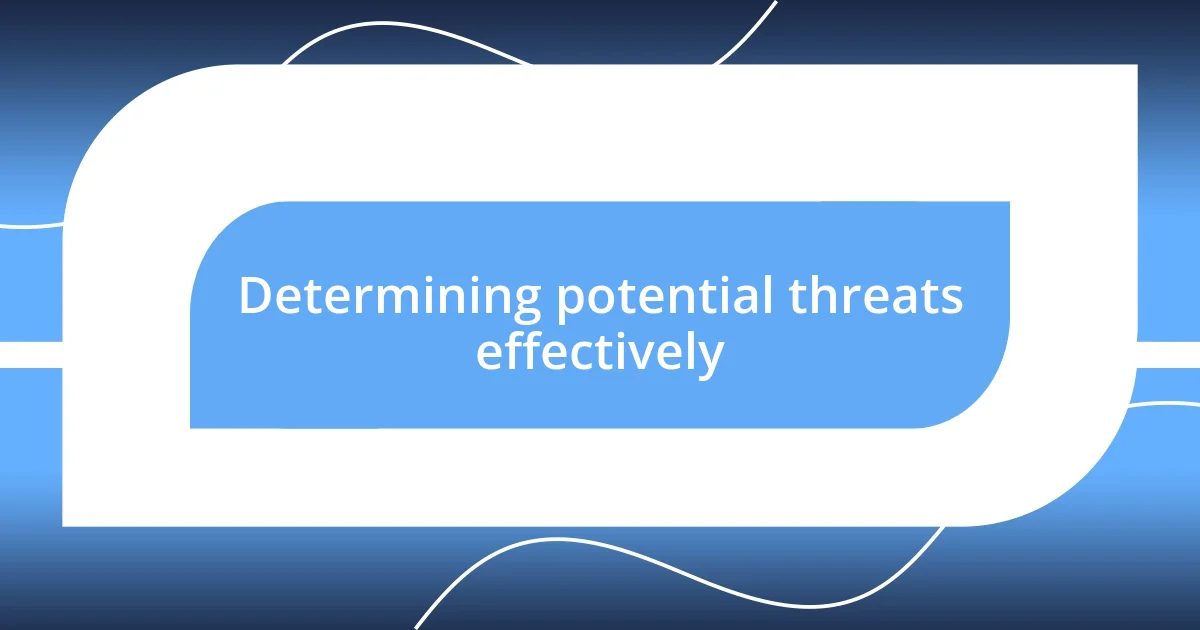
Determining potential threats effectively
Determining potential threats effectively requires a keen awareness of both the internal and external factors that could jeopardize a project. I often start by mapping out potential scenarios that could disrupt our flow. For instance, during one project, I vividly recall a moment when we overlooked third-party service vulnerabilities, which led to a significant delay. Engaging in tabletop exercises has really helped my team visualize these scenarios—it’s like role-playing for security.
Another essential step is assessing the impact of each identified threat. In my experience, not all threats carry the same weight. One time, we faced an unexpected security incident that could have compromised our user data, yet the investigation revealed that an unpatched software was the gateway. We learned to prioritize threats based on their potential impact on our assets and outlined clear responses, turning what could have been chaos into a structured plan.
I also believe in leveraging historical data to inform our threat assessments. Looking back at past incidents empowers me to gauge potential threats more realistically. For example, a third-party vendor I once worked with had a similar breach not too long ago, prompting an urgent review of our integrations. It was a deep-seated reminder that learning from history not only equips us with insights but also builds a proactive mindset towards security.
| Threat Identification Method | Description |
|---|---|
| Scenario Mapping | Visualizing potential threats through hypothetical situations to understand risks better. |
| Impact Assessment | Prioritizing threats based on their potential impact to organize response strategies. |
| Historical Analysis | Using past incidents as a key reference point to inform current threat modeling efforts. |
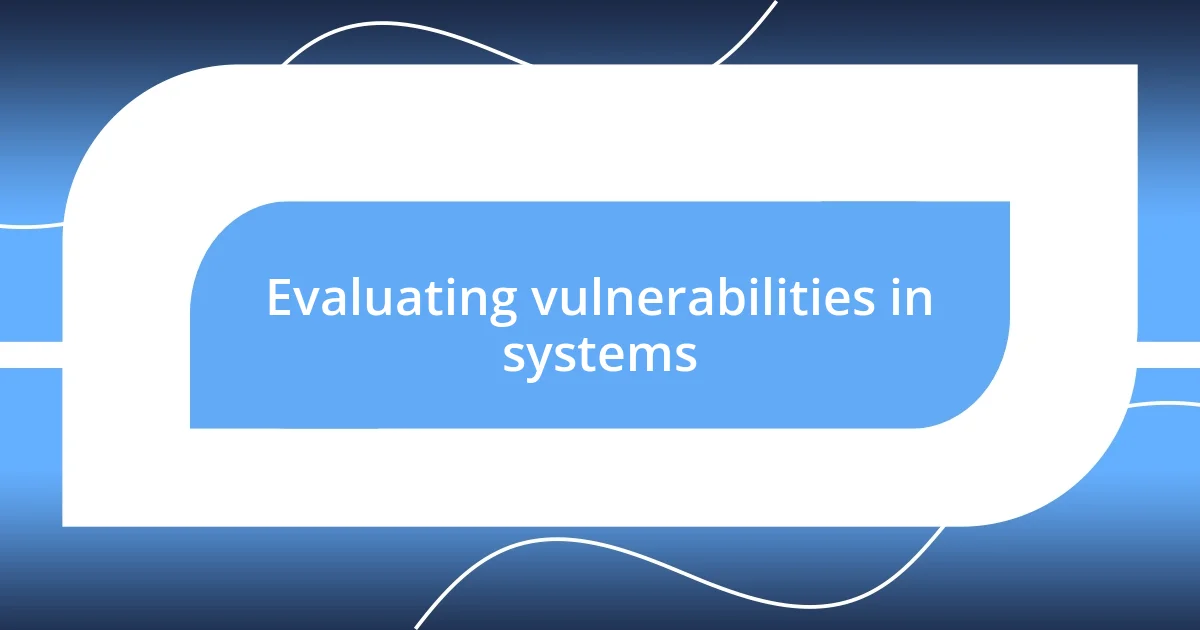
Evaluating vulnerabilities in systems
When it comes to evaluating vulnerabilities in systems, I often find myself reflecting on the unexpected ways weaknesses can emerge. I once worked on a project where we focused heavily on our firewalls but naively neglected an outdated internal application. It wasn’t until a routine audit revealed security holes that we understood the importance of examining every layer. It’s not just about the shiny defenses on the outside; sometimes, the most significant risks lurk in places we least expect.
I’ve learned to adopt a mindset where I play the role of an attacker. Engaging in this exercise heightens my awareness of potential vulnerabilities. For example, during a recent assessment, I realized that our API documentation, which was publicly available, could provide invaluable information to potential attackers. This “aha” moment drove home the reality that even benign resources can inadvertently expose sensitive entry points. Has it ever made you reconsider the way you present information?
Utilizing automated scanning tools has also become an integral part of my vulnerability evaluation process, but I never rely on them solely. While they can quickly highlight potential issues, I combine their findings with manual reviews. I vividly remember one instance where an automated tool flagged several unpatched components, but my thorough inspection unveiled a hidden dependency that was the real risk. This combination of approaches fosters a comprehensive understanding of vulnerabilities, reinforcing that our systems require both technology and human insight to stay secure.
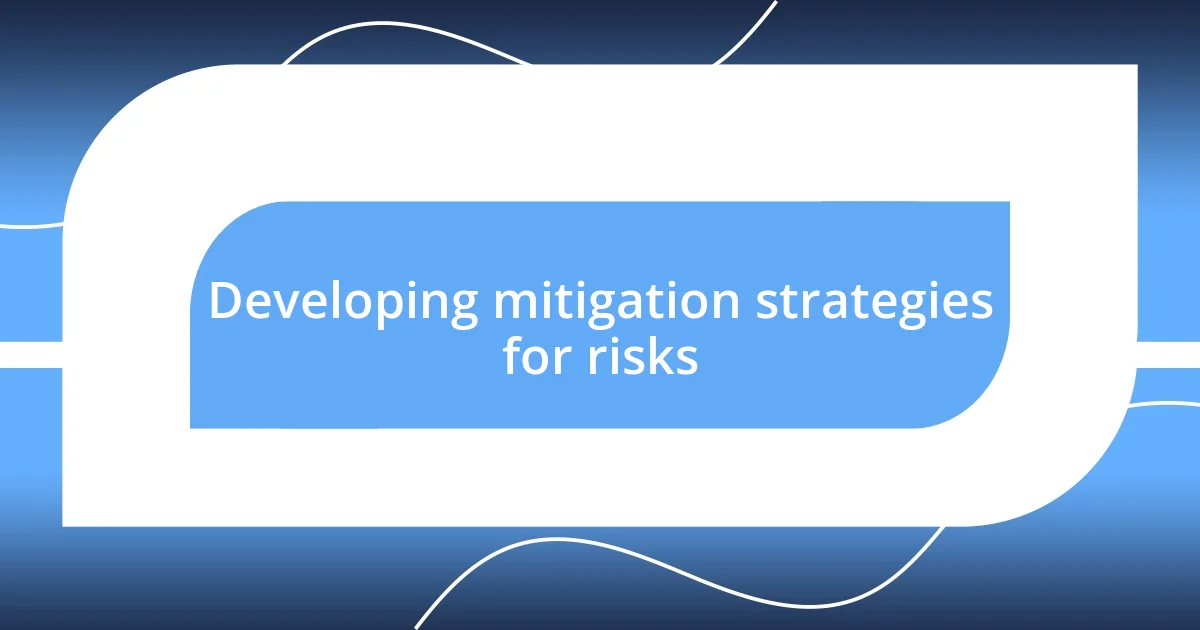
Developing mitigation strategies for risks
Certainly! Here’s how I approach developing mitigation strategies for risks.
In my experience, developing effective mitigation strategies starts with a clear understanding of the threats we’ve identified. I remember a project where we faced the threat of data leakage due to user misconfiguration. Instead of simply adding more controls, we created a user-friendly guide that simplified the configuration process. This not only reduced the risk but also empowered users to handle their data confidently. Have you ever seen how a clear guide can transform a complicated process into a seamless experience?
Addressing risks isn’t just about implementing security measures; it’s about communication, too. During another project, I conducted a workshop with the team to brainstorm potential strategies. This collaborative effort not only unearthed creative solutions but also built a sense of shared responsibility for security. I felt that everyone was more engaged and invested in preventing risks, which ultimately transformed the team’s attitude toward threat modeling. It’s incredible how bringing diverse perspectives together can lead to more robust and relatable strategies.
In crafting mitigation strategies, I also emphasize the importance of continuous monitoring and adaptation. There was a time when we established a risk policy, but I learned the hard way that static strategies can become ineffective over time. As new threats emerged, we needed to revisit and tweak our approaches. Now, I advocate for regular review sessions, prompting my team to ask if our strategies are still relevant. When was the last time you reassessed your own risk strategies? It’s an ongoing conversation that ensures we remain agile and prepared, no matter what challenges arise.












